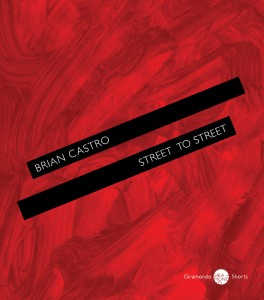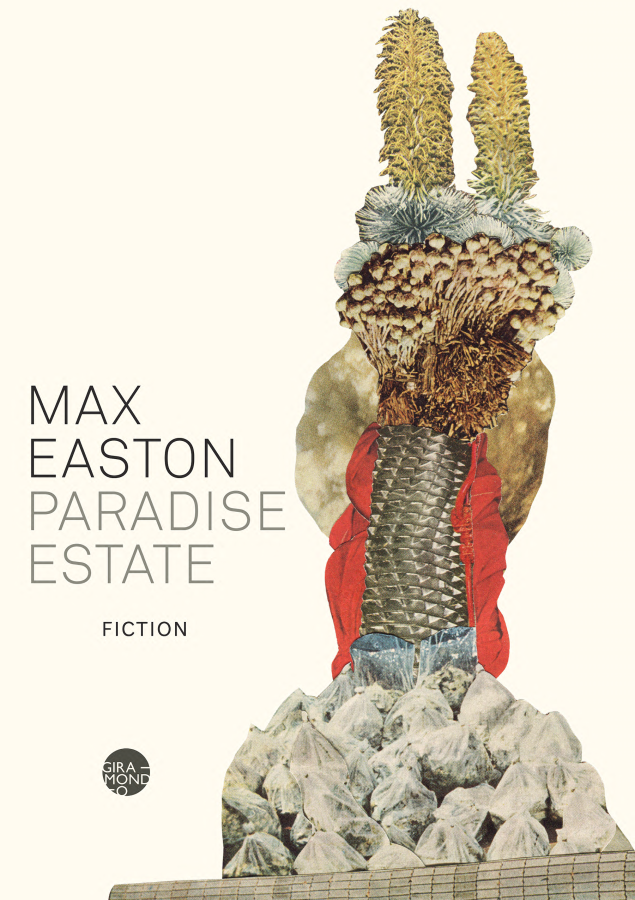The I of my verse is not necessarily ME
A poem is the expression of a mood
A mood need not be a confession of faith
…nor yet a record of real events
All the sincerity required in art is that you should
have thoroughly felt your mood
Christopher Brennan, ‘Chevaux de frise’ (1896)
Christopher Brennan, Australia’s first truly modern poet, penned the lines above as part of an ongoing debate with his friend Dowell O’Reilly about poetry and aesthetics. G. A. Wilkes explains that Brennan’s title, ‘Chevaux de Frise’, refers to ‘the array of spikes set up by the Frisians to repel cavalry charges’ and suggests that ‘Brennan’s dicta might be thought of as the spikes on which O’Reilly’s arguments would impale themselves or at least as an outwork thrown up in defense of his own poetry.’ Axel Clark reads these lines as ‘both a positive statement, as well as a defensive tactic.’ Brennan, he writes, ‘was proposing a poetry which would serve as a kind of autobiography – not as a chronicle of “real events”, but as an expression of “moods”.’ For Katherine Barnes, however, Brennan was doing something larger: ‘He was seeking to express universal moods, aspects of the human condition.’
In Street to Street, Brian Castro resurrects Christopher Brennan in all his defensive, creative brilliance and personal and professional failure. Street to Street is deeply interested in moods, particularly the melancholic mood of failure and defeat. Like so much of Castro’s work, it interrogates and fractures what might be termed the conventional boundaries of auto/biography. Brennan’s ‘Chevaux de frise’ maps beautifully onto Castro’s imaginative project – a ‘kind of autobiography … an expression of moods’.
In Street to Street, Brendan Costa, an Irish-Chinese failed poet and academic, is writing his magnum opus on Christopher Brennan. Costa insists he is not writing a biography of Brennan; he is, rather, absorbing him, ‘taking responsibility’ for him, and trying to understand why Brennan, ‘turn-of-the-century poet, admirer of Mallarmé, Sydney-born Irishman of huge aspiration and talent, could have pursued failure so doggedly’.
It is not hard to see why Brennan, the introspective, troubled, unconventional genius would appeal to Castro. But like his protagonist Costa, Castro is less interested in offering a biography of Brennan than in tracing ‘the way a life unravels, falls apart, becomes dissolute, not for all the obvious reasons like alcohol or disastrous relationships or depressive illnesses, but through mood. Conditional, jussive, optative, subjunctive, irrealis. … A grammar of moods.’
At the Sydney launch of the novella Castro admitted to having spent the past few years immersed in Brennan’s life and work. The depth of that immersion is evident in the subtle and humorous way Castro shapes his narrative around particular images and preoccupations of Brennan’s poetry. So, for example, Costa’s first volume of poetry, entitled Hot Dog, is accepted unexpectedly by a Dutch publisher for a bilingual edition. Not only does this eventuality introduce the seductive Saskia Grivald, the Dutch translator of Costa’s work and later his mistress, it allows Castro to introduce conversations about the great, tortured artist Vincent Van Gogh and suicide (another of Castro’s and Costa’s abiding preoccupations) – and to reference playfully Van Gogh’s The Starry Night and Rembrandt’s The Night Watch. Nowhere does Castro mention explicitly Brennan’s Lilith whose ‘flung hair … is the starry night’, or the following poem in the Lilith sequence in Poems (1913), ‘The Watch at Midnight’. But the allusions invite readers familiar with Brennan’s poetry to return to it and perhaps to discover further imaginative connections of their own.
In his acknowledgements, Castro notes that he is indebted to Axel Clark’s Christopher Brennan: A Critical Biography (1980) and to Katherine Barnes’ The Higher Self in Christopher Brennan’s Poems: Esotericism, Romanticism, Symbolism (2006). Two chapters of note in Barnes’ work are titled, ‘Mirror and Abyss’ and ‘Brennan’s Theory of “Moods”’. Reading Barnes’ scholarship in conversation with Castro’s fiction gives an insight into Castro’s imaginative processes, particularly the way he adapts Brennan’s preoccupations for his own purposes. Where Brennan may have understood moods as a means of connecting humans with the external natural world and the more internal world of the Absolute or the Divine, Castro appreciates moods more as a means through which one failed, alcoholic intellectual may connect with another. His narrator tells us: ‘Sensibility is connected to aroma. Just as the connection is not obvious between space and time, the meeting of two minds is the result of the emission of fineness, memory and incense, the breath of communication beyond reason. It was what [Costa] felt upon meeting Brennan in his poetry.’
For Castro, grief and anxiety are the critical edges of writing. They are integral to the writer’s life. Paradoxically, however, Street to Street could, on one level, be read as Castro’s most optimistic work. It is very funny. There is a familiar disquisition on the impossibility of love, yet love may well be discovered here. There is a pregnancy and the promise of new life, but in the dramatic climax to Brendan Costa’s life we realise that in Castro’s fictive world things may not always be what they seem.
As with moods, mirrors in Castro’s novella have a material, rather than spiritual, nature. Barnes identifies how two interpretations of the ‘looking-glass’ or mirror informed Brennan’s creation of Lilith. The first, from Boehmen ‘cosmogony’, sees the mirror as the ‘imagination of God … a fourth member’ of the conventional trinity. The second – a Yeatsian notion – views the mirror as an element of the ‘serpent-woman who is the mother of this world of mystery and jealousy’. For Castro, mirrors allow one to see the back of one’s head. Mirrors make the ‘overturn’ visible. They allow one to see that what was, is not. Costa’s working title for his dissertation on Brennan is Embarrassment of Riches: Christopher Brennan’s Overturn. He purports to have uncovered a letter from Brennan to Mallarmé, dated June 1898:
In it, he had written of the famous overturn that had afflicted him. He told Mallarmé how alcohol had hidden the realization that the back of one’s head was something which, upon apprehending it and perceiving its strangeness, delivered to the subject the most overwhelming insight and dismay. But the back of one’s head was not about realization; it was about concealment. It was the Book of all Books. The back of his head was what he didn’t want to see. There was failure in that vision.
We see here how Castro plays with the material of Brennan’s life, how Street to Street is ‘the expression of a mood … [not] a record of real events’. In a passage that encapsulates much of Castro’s concern and narrative strategy, he writes: ‘In his bathroom he looked into the mirror. Flaubert, it was said, was fond of the mirror as an instrument of paradox and parody. It allowed him to set himself apart. He rehearsed feeling and catastrophe in order to produce art and to reproduce loss.’ Through his use of mirroring Castro rehearses ‘feeling and catastrophe in order to produce art and to reproduce loss’. Through mirroring, as through moods, he makes connections.
A wonderful cast of literary characters make their appearance in this novella. All are introduced with the lightest of touches: Aeschylus, Dante, Horace, Thoreau, Flaubert, Mallarmé, Shakespeare, Barthes, Milton, T.S. Eliot, Tennyson, Simon Schama and the Beatles, among others. All are there for the taking, or the leaving, by which I mean that Castro’s narrative operates effectively on multiple levels. Street to Street is an extremely accessible, superbly crafted, entertaining and profoundly beautiful work.
Throughout his fiction Castro plays with names. Here Brendan Costa – BC – immerses himself in the life and work of Christopher Brennan. BC/CB: mirroring, reflection. Readers familiar with Castro’s work will recognize his continued play with doubling, with ghosting characters, with ghost writing. However, Street to Street seems to be more interested in trinities than doubles. Costa, we are cautioned early on, ‘was the son, becoming his father, ghosting other lives. There was a trinity at the end of every life.’ And as we might remember from Castro’s essay ‘Dangerous Dancing’: ‘As a writer, you are always two, then three, then more.’ Street to Street is narrated by Costa’s friend and colleague, known, through a play on the Spanish laborado, as the Labrador. In some disorienting moments, where the Labrador refers to himself uncomplicatedly in the third person, readers are left to wonder – as they are so often left to wonder in Castro’s writing – ‘what matter who is speaking?’ The merging of consciousnesses – Costa’s, the Labrador’s, Brennan’s, and always Castro’s – is masterful.
The relationship between BC (by which I may mean Brendan Costa or could I sometimes mean Brian Castro?) and CB drives this narrative – a doubling and a trinity. Both BC and CB attend Jesuit schools in Sydney, both are appointed to minor lectureships at the University of Sydney, both are introspective, brilliant outsiders, both are alcoholics, both are dogged in their pursuit of failure. Costa realizes that ‘Brennan was out of kilter like himself. Not quite well balanced’. The energetic, witty prose moves quickly and seamlessly between the two central stories of their lives until at one point the Labrador remarks: ‘Costa had become contemporaneous with’ Brennan.
There is a decisive break. But before addressing the cause of that break let us consider briefly the relationship between Brian Castro and Christopher Brennan. The pairing of these two Australian men of letters would appear unlikely. Yet, if we go back to Judith Wright’s 1970 lecture on Brennan, we begin to appreciate some powerful connections between these writers. Wright says:
if we were asked what original contribution Australian poets have made to the long philosopho-poetic argument of the West, our answer would have to begin, and even to end, with Brennan’s work.
Yet there has been almost no recognition of this fact, except in Australia itself. This is what makes our view of him tentative, uncertain. The field he chose for his poetry was conspicuously un-Australian; the argument he pursues requires a background that was never provided here.
Wright goes on to discuss Brennan’s ‘unreal’ use of the archaic in this ‘new country’, noting that critics needed him to be ‘at least amusingly colonial’. We can see how Brennan not fitting some prescribed definition of an Australian writer, coupled with the dark loneliness and failures of his life, would attract Castro’s interest. Castro may also have been drawn to Brennan’s suggestion, cited by Wright, that his poems ‘could as well have been written in China’.
Castro’s Christopher Brennan, a ‘wanderer in feet and metre’, is a very personable character. Brendan Costa (and I would suggest Brian Castro) is drawn to him because he was ‘running in the opposite direction from a national literature’. The crucial break between Costa and Brennan is precipitated by Costa’s discovery of an article written by Brennan in 1927 for the St Joseph’s magazine for old boys. He is devastated:
It was entitled ‘Some Makers of Australia’, a call to the ‘poet’s national task’, where he spoke of a racial inheritance, an intimacy with the sense of home … Brennan was trying to remake himself, Costa told me, but did not understand that only when his country was an impediment, rather than an advantage, could he call himself free … He said he ‘would not go to the end with Brennan.’ That he could not, as someone from the Far East … that was his phrase … go along with pamphleteering, trumpet blowing and three-cheering … taking on a national stance was unbecoming.
This debate is one of the reasons I am so thrilled by Street to Street. Not only does Castro resurrect Brennan and his work in a way faithful to Brennan’s imaginative project; he also quite legitimately uses Brennan’s historical, lived reality to probe, yet again, the thorny issues of our national literature and of identity.
For all its discussion of failure, this is an extremely successful novella. The pleasure of the text arises from the many coincidences of language and plot. These are not divisible and that is what makes the play so brilliant and rewarding. The intricacy of the writing, where so many allusions, puns and observances return in various forms, is astounding. Some I cannot mention without spoiling the conclusion; in others, we trace Edenic golden apples, frogs, watchers, tram and train tracks, and, crucially, Costa’s beloved old black dog, Dante. Suffice to say, the final line of this novella, narrated by the Labrador, reads: ‘Then again, one should not press the point, not right now, because if you ask me, one should sometimes let sleeping dogs lie.’
For some years now Castro, who is currently Chair in Creative Writing at the University of Adelaide, has held various positions in Australian universities. The passages about the truth of university life – faculty meetings, deadlines, grants, publications, petty rivalries and power plays – truly delight. So too do the passages about students on iPads in class and Costa having to surrender teaching Patrick White for Old Norse. Christopher Brennan’s interview for his position as Assistant Lecturer in Modern Literature is superb. The way the university thrives not on teaching but on the meeting, the ‘smacking down and smacking up’ of staff from junior lecturers to the vice-chancellor, and the emphasis on ‘student experience’ is hilarious – and unfortunately very true.
Street to Street is the sixth short work by Giramondo. The form adds an intensity and energy to Castro’s prose. He is no stranger to the novella form, indeed his previous publication The Bath Fugues (2009) is structured as three interchangeable novellas. It may seem contradictory, but to my mind this novella sits alongside Castro’s first publication with Giramondo, the expansive epic Shanghai Dancing (2003), as one of his most superbly crafted works. You can read Street to Street in one sitting, but don’t be deceived by the small packaging of the text. The power and poignancy of this narrative will continue to haunt long after the covers are closed.
Christopher Brennan’s poetry has undergone a recent revival of interest. In an essay published earlier this year Michael Farrell argued that, ‘Brennan’s Musicopoematographoscope … attempts to enact cultural diversity.’ He continued: ‘Recovering the diversity and energy of the field of Australian poetry requires an openness to form and willingness to read texts beyond their immediate contexts … Though Brennan’s symbolist verse continues to unsettle critics, the agency of the Musicopoematographoscope is just beginning its unsettling work.’ Unsettling work is what Castro does best. As this, his tenth major work of fiction, demonstrates, he is always seeking to take his readers somewhere new, to challenge us ‘to read texts beyond their immediate context’, and to experiment playfully with form. In The Story of an African Farm (1883), Olive Schreiner wrote: ‘the attribute of all true art, is … that it says more than it says, and takes you away from itself.’ Such is the attribute of Castro’s writing – writing which continually invites readers to make rhizomic connections through the world of ideas and art and music and literature.
This article was revised on 23 July 2014. It had incorrectly referred to the critic G. A. Wilkes as Geoffrey Wilkes. The ‘G’ in fact stands for Gerald.
References
Katherine Barnes, The Higher Self in Christopher Brennan’s Poems: Esotericism, Romanticism, Symbolism (Brill, 2006).
Christopher Brennan, Poems (Angus & Robertson, 1992).
Brian Castro, ‘Dangerous Dancing: Autobiography and Disinheritance,’ Australian Humanities Review (December 1998).
Axel Clark, Christopher Brennan: A Critical Biography (Melbourne University Press, 1980).
Michael Farrell, ‘Unsettling the Field: Christopher Brennan and Biodiversity,’ JASAL, vol. 12, iss. 1 (2012).
Olive Schreiner, The Story of an African Farm (Penguin, 1986).
G. A. Wilkes, ‘Interpreting Brennan’s Poetry: or “The I of My Verses is not Necessarily ME,”’ Southerly, vol. 37, iss. 4 (1977).
Judith Wright, ‘Christopher Brennan,’ Southerly, vol. 30, iss.4 (1970).





